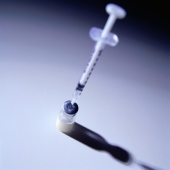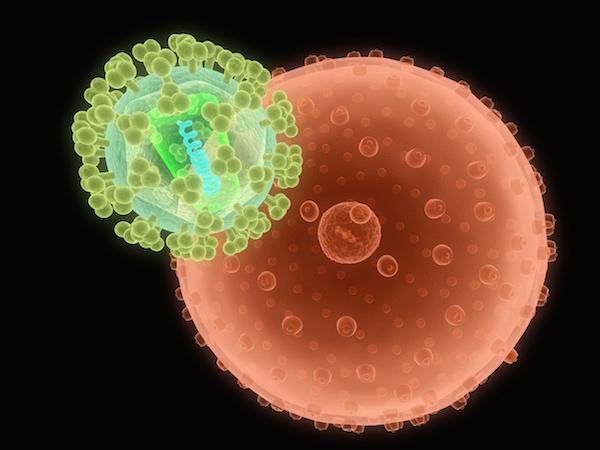
MONDAY, June 4 (HealthDay News) — John Mahan, a 58-year-old Nashville firefighter battling a gastrointestinal cancer, couldn’t believe what he was hearing last July.
His doctor had just told him that his clinic had run out of injectable fluorouracil (5-FU), the generic chemotherapy Mahan needed to keep his tumor at bay.
“My initial reaction was, ‘you’ve got to be kidding, right?'” he said.
Unfortunately, the news was all too real. Mahan was switched to another drug, capecitabine. Taken in pill form, it had the same anti-cancer effectiveness as 5-FU but with more onerous side effects.
“It made me feel bad, weak,” Mahan said, “just run down, feeling tired all of the time, loss of appetite.”
At a Monday news briefing at the annual meeting of the American Society of Clinical Oncology (ASCO) in Chicago, Mahan spoke on behalf of the thousands of cancer patients who have been hit hard by the recent nationwide shortages of generic, injectable cancer drugs.
The crisis peaked earlier this year when children with a leading form of childhood cancer, acute lymphoblastic leukemia (ALL), were faced with a looming shortage of a lifesaving drug, methotrexate. Quick action on the part of the U.S. Food and Drug Administration, the pharmaceutical industry and others averted that shortage, but deficits in this and other cancer medicines are still possible, experts warn.
“The good news has been that the frequency of the drug shortages has begun to decline for a variety of reasons,” Dr. Richard Schilsky, chair of ASCO’s government relations committee, told reporters. “But there is still an unpredictable availability of many drugs and we are never sure exactly when a generic drug is suddenly going to go out of supply. That creates a tremendous amount of uncertainty — anxiety for our patients and great difficulty in planning if you’re a physician.”
Overall, 22 crucial oncology therapies have recently been in short supply, noted ASCO President Dr. Michael Link. Of most concern right now, he said, are shortages of a handful of medicines:
- Methotrexate — while there is currently an adequate supply of methotrexate for ALL and other cancers, there is now a shortage of a compound needed for patients who require high-dose infusions of the drug, Link said.
- 5-FU — gaps in supply remain for this mainstay generic medicine, used to fight cancers of the colon, pancreas, head-and-neck and other sites.
- Nitrogen mustard — one of the earliest anti-cancer therapies developed, it remains essential to care of lymphomas and Hodgkin’s disease. “It has been unavailable for some time,” Link said, and there are no really good substitutes.
- Paclitaxel (Taxol) — periods of short supply continue for this key treatment for breast cancer and other malignancies.
“Hearing from our members, we are learning that the shortages are most acute among community practices where the majority of adult patients are cared for,” Link added. Smaller centers may not have the buying clout that larger, academic medical centers might have, leaving them more vulnerable to shortages, he explained.
These drug shortages typically occur among sterile injectable cancer medications that have gone to cheaper, generic status. The experts gathered at the meeting noted that the world’s supply of generic medications is now concentrated in only about six companies that may produce dozens or hundreds of drugs.
“So, for example if one company makes 30 products and they have a problem, suddenly 30 products are at risk of a shortage,” explained Dr. Sandra Kweder, deputy director of the Office of New Drugs at the FDA. Producing highly sophisticated, sterile injectables is a particularly complicated process, she said, and quality issues can arise that cause plants to be temporarily shut down while the issue is resolved.
In many cases, these safety issues are not minor ones, Kweder noted, and can include “particles of glass or metal shavings” found in vials that, of course, pose safety issues for patients.
But, why the shortages now? According to Kweder, it’s not that new, tougher quality-control rules have come into place recently. Instead, a host of popular drugs have recently gone off-patent and “what we’ve seen is great growth in the generic world,” she said. As more generics get produced at more production facilities, “we are just seeing more in terms of problems in that manufacturing,” Kweder said. Many companies are now modernizing their production facilities, she said, but that will take time.
According to Kweder, the FDA, in close consultation with drug companies, has already prevented about 150 drug shortages since October of last year, when President Barack Obama signed a special Executive Order demanding action on the issue. As companies gave FDA early warning of looming problems, the agency and the pharmaceutical industry worked together to find alternate sources of supply, including imports from abroad, Kweder said.
Methotrexate, the drug needed by children with leukemia, “continues to be very carefully monitored,” Kweder said. “We expect the [shortage of] the injectable that has been difficult for some practices to obtain to be resolved within the next month completely.”
Progress is taking place at the Congressional level as well, the experts said, as a bill makes its way through the House and Senate that would mandate that generic drug makers give the FDA six months advance notice of any possible production problems.
The bill, which has the full support of ASCO, also includes a provision that generics makers would pay the FDA a user fee, aimed at speeding oversight and approval for new generics.
All of this gives some comfort to Mahan, whose cancer has progressed but is being held in check by a new course of therapy. Still, he worries about other patients who may be facing the same dilemmas he did.
“Until this impacts you personally,” he said, “most people aren’t even aware that there’s even a shortage going on.”
More information
Find out more about the shortage of cancer medications at the U.S. Food and Drug Administration.

